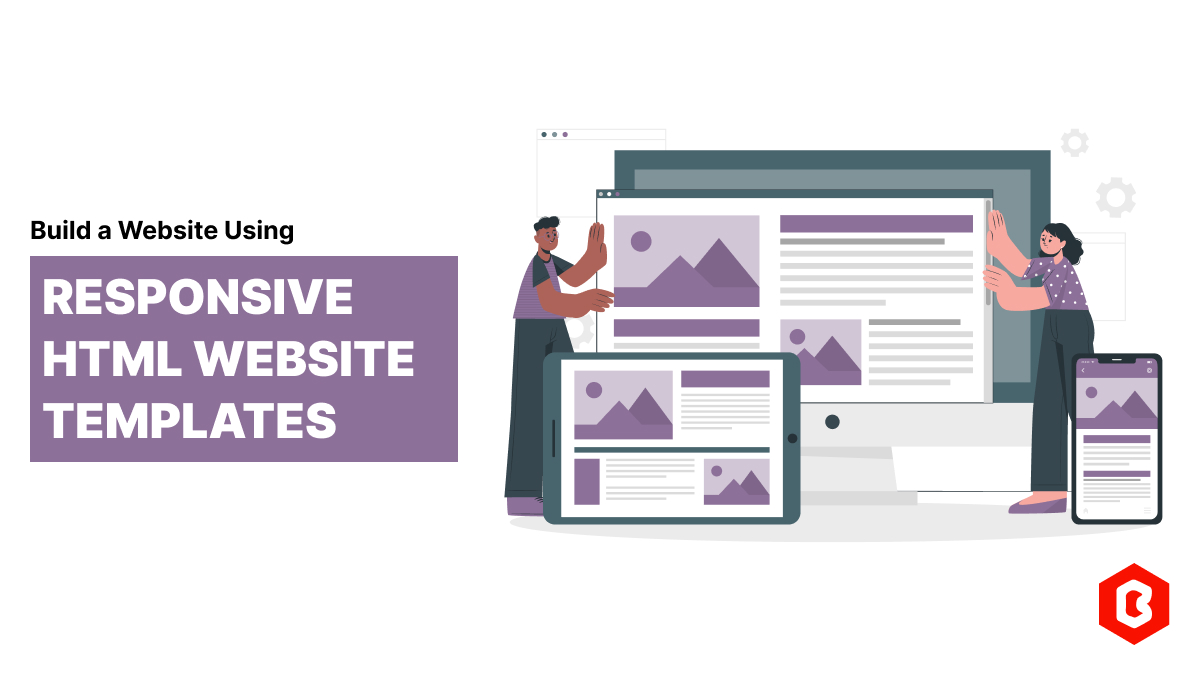Black Friday Special! Buy any 1 product and get 1 absolutely free — this offer applies to all Website Templates, UI Kits, and Complete Scripts.
Buy Now!
Building a website may seem tough, but it can be easier. With the rise of readily available, user-friendly, and responsive website templates, you can easily create a professional-looking online presence. In this article, we’ll learn about how to build a website with HTML templates that are responsive.
Define Your Needs: You must know the key purpose of your online presence. It can be either presenting your business through an official website, presenting your skills through a portfolio, educating visitors through blogs, or selling products online.
Explore Templates: Browse through online marketplaces like Bitrix Theme, ThemeForest, and TemplateMonster to find responsive website templates that suit the most with your brand's aesthetic and required functionality.
Ensure Responsiveness: Ensure the template is fully responsive. It must automatically adjust its layout to perfectly fit any screen size (desktops, tablets, and mobile phones). This can create a positive user experience in today's mobile-first world.
Purchase and Download: Once you've selected a website template, make a purchase and download it.
Extract the Files: After you download a website theme, extract the necessary files, which typically include HTML, CSS, JavaScript files, and sometimes images and fonts. Extract these files into a designated folder on your computer.
Install Local Server: Setting up a local server environment (like XAMPP or MAMP) allows you to test your website offline before publishing it online. Hosting local websites provides a safe and controlled environment to make changes and experiment without affecting a live website.
Install the Template: Place the extracted template files within the appropriate directory of your local server (usually the "htdocs" or "www" folder).
Replace Placeholders: Update the template with your own text, images, and videos while customizing your website. Replace the generic placeholder content with your unique brand messaging and visuals.
Edit Colors and Fonts: Adjust the template's colors and fonts to match your brand identity. Most website templates offer easy-to-use options for color customization.
Modify the Layout: Rearrange sections, add or remove elements, and customize the overall structure to suit your specific needs.
Create and Add Pages: Create new pages for your website if required (e.g., About Us, Contact, Services) and add relevant content to each page. You can also reach out to service providers like Bitrix Theme to create web pages professionally with front-end development services.
Optimize Images: Resize and compress images to improve website loading speed and performance.
Test on Different Devices: View your website on various devices (desktops, laptops, tablets, and smartphones) to ensure it looks and functions correctly on every screen size.
Test in Different Browsers: Check your website's appearance and functionality in different web browsers (Chrome, Firefox, Safari, Edge) to ensure cross-browser compatibility.
Choose a Hosting Provider: Select a reliable web hosting provider like Bitrix Infotech that suits your needs and budget.
Upload Files: Upload all the files from your local server to your web hosting account using FTP (File Transfer Protocol) or a similar tool.
Update DNS Settings: If you have a custom domain name, update your domain name's DNS settings to point to your web hosting server.
Check Responsiveness: Ensure you’re purchasing a responsive website template through the seller or the live template preview.
Template Quality: Choose a high-quality template from a reputable source.
Read the Documentation: Familiarize yourself with the website template's documentation to understand instructions and guides to customize the website.
Security: Ensure the template is free from security vulnerabilities. Regularly update the template and any associated plugins or extensions.
Backups: Regularly back up your website files to prevent data loss.
Regular Updates: Keep your business website updated to ensure compatibility with the latest web technologies and security patches.
Building a website using responsive HTML templates is an accessible and efficient way to establish an online presence. By following these steps and carefully selecting the right template from service providers like Bitrix Theme, you can easily create a functional and attractive website that meets your specific needs and represents your brand effectively.
Having a responsive web template can help you succeed and keep your business ahead of the competitio...
As you know, in today’s online world a business website remains the best way to win the custom...
Do you know? The Jewelry Market value is hitting the limit of 310.88 Billion USD in 2024 and by 2028...
When the world is going online, having a responsive website that works flawlessly across all devices...
Having a website has become necessary for all sizes of businesses in this digital world. Whether you...
Creating a website using a WordPress template or theme is a great idea for those individuals who are...

Not sure which template or UI kit fits your project? Reach out for expert advice.